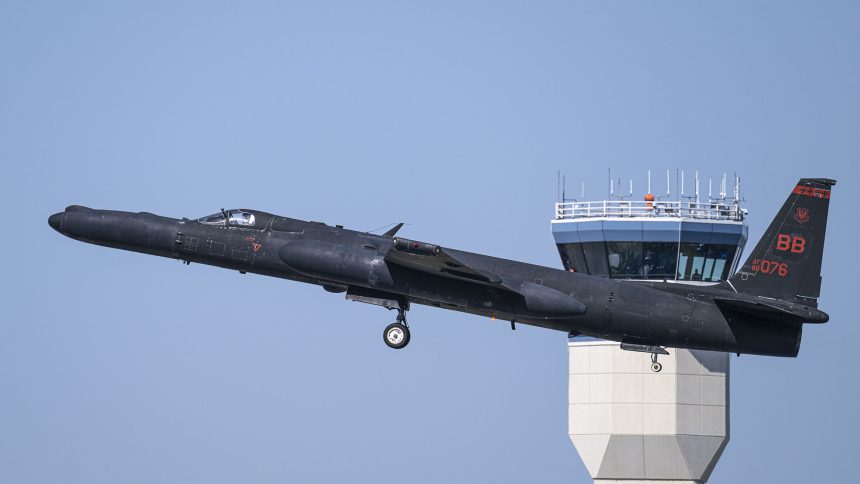Two U-2 pilots, including a Wisconsin native, share rare insights on the legendary spy plane’s enduring legacy and relevance in today’s battlespace.
EAA AirVenture Oshkosh 2025 drew a record-breaking crowd of 704,000 aviation enthusiasts, according to the Experimental Aircraft Association, making it the largest event in the show’s history, eclipsing the previous record of 686,000, set in 2024. For one week, July 21–27, 2025, Wisconsin’s Wittman Regional Airport transformed into the world’s busiest airfield and a temporary home for more than 10,000 aircraft, from handcrafted homebuilts and classic warbirds to the latest in aerospace innovation.
Yet among the thousands of aircraft on display, few commanded the kind of attention and respect earned by the Lockheed U‑2 Dragon Lady. Marking the 70th anniversary of its first flight in 1955, the U‑2’s presence at Boeing Plaza wasn’t just a nod to Cold War history. It was a living symbol of a reconnaissance platform still being flown today at the edge of space, by pilots who wear David Clark Company S1034 pressurized suits and train for missions few ever see.
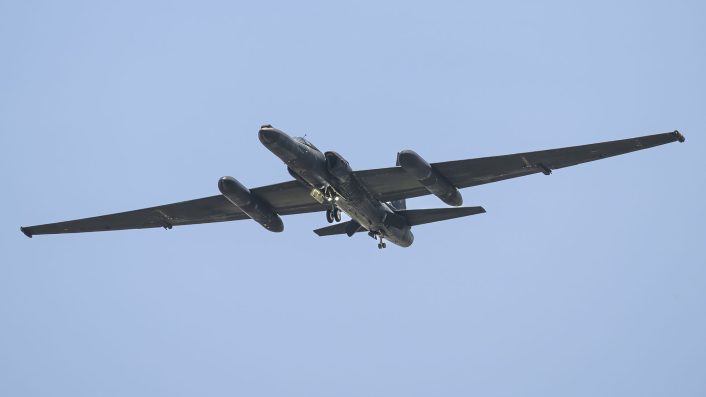
U-2 program history
The U‑2’s origins trace back to the early years of the Cold War, when U.S. intelligence agencies urgently sought a way to look deep into Soviet territory without setting off a war. Designed in secret by Kelly Johnson’s legendary Skunk Works team at Lockheed, the U‑2 was conceived as a lightweight, jet-powered aircraft capable of flying at altitudes above 70,000 feet — well beyond the reach of Soviet fighters or surface-to-air missiles, or so it was thought.
The aircraft’s development moved at astonishing speed. Just eight months after receiving the go-ahead, the first prototype, designated Article 341, was ready for flight at Groom Lake, Nevada. On August 1, 1955, famed test pilot Tony LeVier attempted a high-speed taxi test. But as the U‑2 accelerated, its long, glider-like wings unexpectedly generated enough lift to get it airborne. Though unintended, the aircraft flew briefly before LeVier brought it back down safely on the runway.
The official first flight took place just days later, on August 4, 1955, when LeVier again took the controls for a planned and controlled ascent. That brief mission marked the beginning of a program that would remain cloaked in secrecy for years and ultimately shape global surveillance, diplomacy, and military doctrine for decades to come.
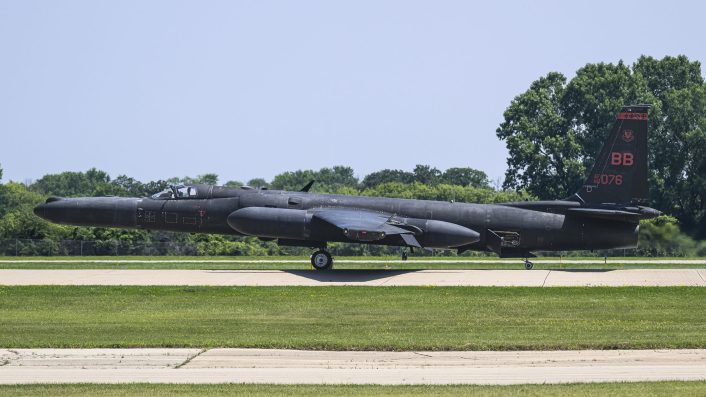
In the years that followed, the U‑2 would fly over the Soviet Union, Cuba, China, North Korea, and later Iraq and Afghanistan, capturing detailed strategic imagery. Its most infamous mission came on May 1, 1960, when pilot Francis Gary Powers was shot down over Soviet territory, starting an international crisis and revealing the program to the world. Yet despite that high-profile setback, the Dragon Lady has endured, re-engined, constantly updated, and refitted for the demands of modern intelligence gathering.
In spite of being designed in the 1950s, the U‑2 has remained remarkably adaptable, undergoing numerous upgrades to meet the evolving demands of global intelligence and reconnaissance. After the Cold War, the aircraft shifted from peering over enemy borders to supporting real-time battlefield awareness. During Operations Desert Storm and Iraqi Freedom, U‑2s provided high-resolution imagery and signals intelligence that proved critical for tactical and strategic decision-making.
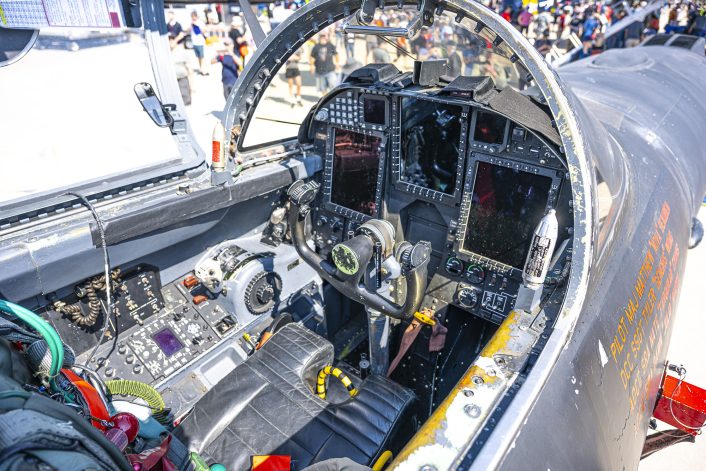
Throughout its operational history, the aircraft was continually modernized. The current U‑2S variant, introduced in the mid-1990s, features a more powerful General Electric F118 engine, advanced electro-optical sensors, synthetic aperture radar, and cutting-edge data link systems that allow for near real-time transmission of intelligence to ground commanders. Pilots continue to wear pressure suits, as missions often reach altitudes above 70,000 feet, placing them on the edge of Earth’s atmosphere, where the curvature of the planet is visible.
The U‑2 also gained new relevance post-9/11, supporting missions across Afghanistan, Iraq, Syria, and other regions where high-altitude surveillance was essential. Its ability to loiter above contested airspace for hours while collecting multiple forms of intelligence made it an irreplaceable asset in a world of rapidly evolving threats.
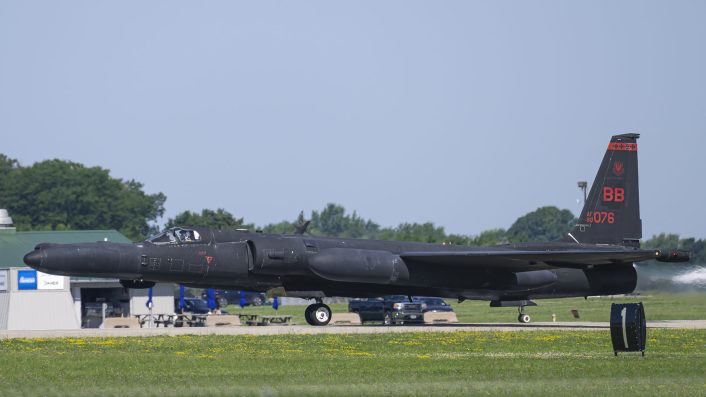
More recently, the U‑2 has been tested in multi-domain operations, integrating with cyber, space, and artificial intelligence platforms. Even as unmanned systems like the RQ‑4 Global Hawk have entered service, the Dragon Lady continues to outperform them in payload flexibility, responsiveness, and mission versatility.
Though often threatened with retirement, the U‑2 has repeatedly earned a reprieve thanks to its unmatched altitude, adaptability, and human-in-the-loop capability. Rather than being phased out, the U‑2 continues being integrated into networks that can rapidly share data across multiple domains, ensuring its continued relevance as a node in 21st-century warfare.
For all its mystery and cutting-edge capability, the U‑2 remains, at its core, a human-driven platform. Pilots not only fly the aircraft, they also display the discipline, precision, and endurance that high-altitude reconnaissance demands. Few understand this better than Lt. Col. Jon “Huggy” Huggins, a revered figure within the U‑2 community. With a long and distinguished career flying the Dragon Lady as well as the T-38, Huggy continues to serve as a GS-13 civilian U‑2 instructor pilot, mentoring the next generation of U‑2 aviators and carrying forward the institutional knowledge.
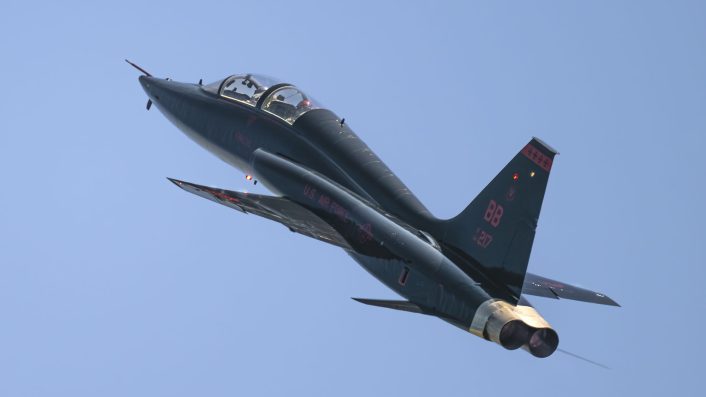
Joining him at this year’s AirVenture tribute was Lt. Col. “GOGO” (note: for operational security purposes, only call-sign names are used), an active-duty pilot and Inspector General with the 9th Reconnaissance Wing’s 99th Reconnaissance Squadron. Lt. Col. GOGO is a Wisconsin native who grew up just 20 miles from Oshkosh. His landing of the U‑2 at Wittman Field wasn’t just a showcase of the infamous Dragon Lady — it was also a homecoming, adding a personal connection to an already historic moment.
The Aviationist was privileged to speak with both men in Oshkosh. In the interviews that follow, they share insights into the aircraft, the lifestyle of U‑2 pilots, and the reasons this Cold War icon remains a vital piece of today’s modern ISR architecture.
Interview with Lt. Colonel GOGO
Lt. Col. GOGO is Inspector General, 9th Reconnaissance Wing, 99th Reconnaissance Squadron, U-2 pilot at Beale Air Force Base, California.
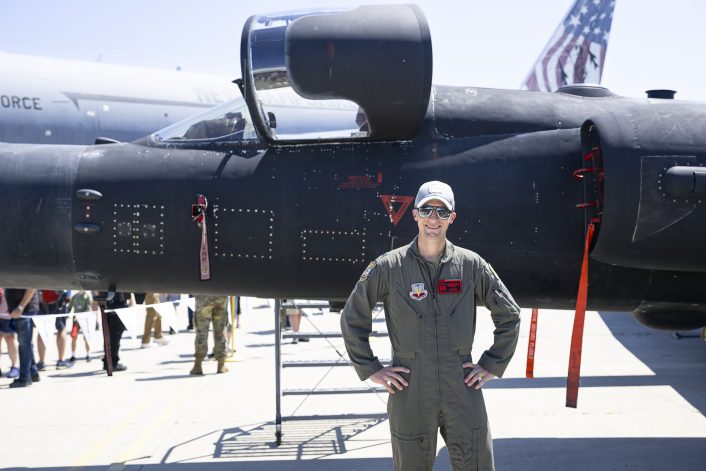
TheAviationist: Can you please provide us your background, where you grew up, where you went to school and your path to flying the U-2?
Sure, so I am Lt. Colonel, GOGO. I grew up about 20 minutes south of Oshkosh in Fond du Lac. I lived there until I went to college, at the University of Wisconsin-Madison. I did engineering, and joined ROTC, the last two years. I then picked up a pilot slot, and was able to attend pilot training at Columbus Air Force Base. After completing pilot training, I was then selected to be a FAIP (First Assignment Instructor Pilot) in the T-6. I did that for about two and a half years, then, I tried to apply to the U-2 while I was at Columbus. The timing did not quite work out with the folks in the U-2 program, therefore, I went to Davis-Monthan to fly in the EC-130 Compass Call. I completed a few deployments while stationed at Davis-Monthan, flew roughly 800 hours, and then reapplied to the U-2 program. I interviewed and was ultimately accepted. Thus, in 2017 I arrived at Beale Air Force Base, went through training and completed my first deployment in 2018.
What squadron are you in now at Beale AFB, and what squadron did you start in?
All U-2 pilots start in the 1st Reconnaissance Squadron and then move to the 99th Reconnaissance Squadron. At the 99th I became the OG Executive, then after that I did a tour at the Pentagon, after the Pentagon, I came back to Beale AFB, went through retraining at the 1st Recon. Squadron, becoming the Director of Operations of the 1st Recon. Squadron. Currently I am the Inspector General of the 99th Recon. Squadron.
How many hours do you have in the U-2 and total flight hours?
I have about 650 hours in the U-2, and roughly 3000 total hours.
Thanks for that summary. What drew you to the U-2, as it is not a very common path for US Air Force pilots?
Well honestly it was the online postings of “Huggy”, who you already interviewed. He is a great salesman, and he was truthful about everything he said. It’s a unique mission, it’s a cool mission, something that very few get to do and just an awesome experience. It’s proven to be that.
How is the community of U-2 pilots different from other flying communities you’ve been in?
It is a very small community, very tight knit. For better or for worse, there’s no dirty laundry that everyone doesn’t get to know about. So, you better like your brothers and sisters in arms. On the other hand, you don’t have to deal with some of the, assignment “isms”, of the big Air Force, because, everyone knows who you are, where you’re going.
We’re a little bit odd ducks because it takes a unique personality to want to go get in that suit where you can’t scratch your nose for 12 hours, fly off by yourself for up to 12 to 14 hours, unafraid. Therefore, we have to have a few screws loose to want to do that in the first place. So, we’re a little bit crazy, but I would also say we are dedicated professionals. There’s nobody who is more dedicated to the ISR (Intelligence, Surveillance, Reconnaissance), mission set and providing intelligence, than the crop of U-2 pilots you’ve got from the Air Force right now. They’re true professionals, and they are solving problems that commanders don’t even know they have before they solve them.
Regarding the U-2 community in personal life, it’s great. You have this network of friends that you’re going to have for the rest of your life, it’s just truly amazing.
How many U-2 pilots are there currently flying the jet, and are new pilots being trained, if so, how many?
Worldwide there are roughly 80 pilots, and we currently have one going through training.
Regarding the 70th Anniversary of the U-2: 70 years is a very long time for an aircraft to stay relevant. Why do you think the U-2 is still flying today.
Simply, because it is adaptable. The U-2 is not the same aircraft that’s been flying for 70 years. The ones that we are flying right now were built in the 80’s, 90’s. Still no young pups, but we’re not flying 70 year old airplanes. The U-2 itself, is very modular, which allows it to take all sorts of different tools and sensors and put them to good use, and we’ve been able to do so in a fairly quick fashion. That is one reason combatant commanders tend to love us.
Thanks for that. Oshkosh is only twenty miles from where you grew up, you are a local here. What it’s like to bring the U-2 to a show like the EAA AirVenture, where the crowd includes everyone from kids to veterans to aviation historians. What does that mean to come here?
It was just so cool. I mean, AirVenture is just the Mecca to pilots. Therefore, to be able to fly not just a military airplane, but one of the most unique military airplanes out there, to my hometown, it’s fulfilled a bucket list item. A true dream I’ve had since childhood.
Did you come to the AirVenture when you were a kid?
I sure did. I already had a love of flying, but this place made it flourish. This is just one of the coolest experiences that you can’t just describe to somebody who’s never been here. Therefore, to be here in this fashion, I just can’t put it into words. I was truly awestruck. The butterflies I was feeling on descent and as I saw the airport from about 20 miles out, it just became real.
Did you ever previously land an aircraft at Oshkosh?
No, I did not, this was my first landing here. It was nice that when flying in a U-2 you sort of get priority treatment upon landing. The controllers cleared the way slightly, and were holding down arrivals in Fond du Lac, so yes, I was a bit spoiled arriving.
What influence did your hometown or upbringing in Wisconsin have on your decision to join the Air Force and aim for something like the U-2?
I would say the hometown’s big contribution to that would be its location in regards to Oshkosh, the fact that I was able to come up here, not just at AirVenture, but even, during the middle of the winter and go to the museum and see a really great museum, it really helped stoke that fire burning inside me. As far as joining the Air Force, that was very much related to some of the exciting opportunities that the Air Force provides, and having total support from my family.
What did your family think and how did they react, when you landed at AirVenture 2025?
When I landed, it was super cool. Everyone was telling me how amazing it was. There were hugs, it was truly, an awesome experience. But that was my extended family. My daughters were jumping up and down and just squealing. It was absolutely off the charts.
Thanks very much for sharing those family experiences. Let’s now shift focus to operation of the U-2. Much has been said about how difficult the U-2 is to land. How much of that reputation is myth versus reality?
It is real, that being said, it still is an airplane. An airplane that is very unforgiving if you are off your airspeed, or you get lazy, as it will bite you, no matter how much experience you have in the jet. That is not to say it’s impossible as there’s been a more than 1100 people who’ve been able to do it, but yes, you definitely can never get complacent. You must be fully committed to flying the jet.
The U-2 has outlasted generations of replacements. What does it still do better than the modern alternatives, like satellites or drones?
I would hark back to the modular aspect. Obviously, there’s some physics associated with the altitudes that we fly that give it unique advantages to certain, signals and wavelengths. In addition, having the pilot on board means it can be very flexible. Ultimately, I would say the number one reason it’s been able to keep flying this time is because it’s had the dedicated professional pilots and all the support networks, whether it’s the engineers, maintainers, the leadership that have been able to craft it towards different emerging mission sets, so that it hasn’t just fallen into one role.
Can you talk briefly about the U-2’s integration with other platforms?
We have a weapons school that started about five years ago. Thus, we’ve been able to have a cadre of weapons officers and they’ve taken our integration to a whole new level, which is exactly what you expect your “patch wearers”, (USAF Weapons School graduates), to do.
Okay, last question to close it out. What’s one thing you think the public should absolutely understand about the U-2?
I would say that no matter what happens to the U-2, the spirit of what made the U-2 so great will continue to live on. The spirit of innovation, the spirit of determination. None of those things will ever go away. It is truly the people that will enable any of the gadgets, machinery, what have you. They will enable those things to ultimately succeed, in whatever mission they are given.
Interview with Lt. Colonel Jon “Huggy” Huggins.
Lt. Col. Jon “Huggy” Huggins is an Instructor Pilot with the 9th Reconnaissance Wing, 1st Reconnaissance Squadron, at Beale Air Force Base, California.
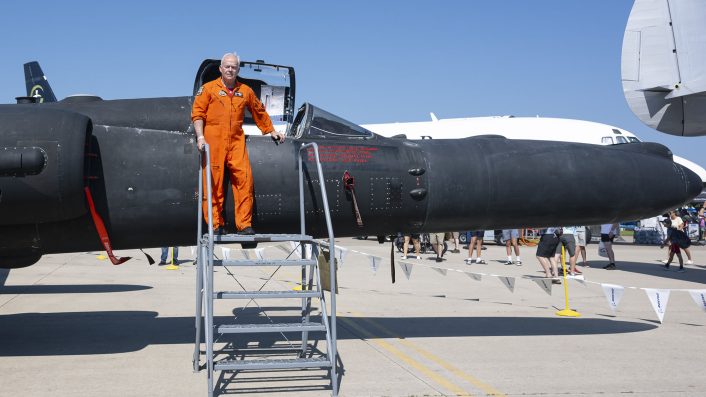
TheAviationist: Huggy, can you please provide us your background, where you grew up, where you went to school, and career path to the U-2.
I grew up in Houston. I actually moved around quite a bit all over the US, but I was never involved in aviation, other than the fact that I grew up in the space program, lived in the same neighborhood as most of the early Apollo astronauts, went to University of Texas ROTC. When I graduated, I was commissioned as a Lieutenant and went to pilot training in Del Rio, Texas, at Laughlin Air Force Base. At Laughlin, they selected me to stick around as a first assignment instructor pilot for the T-38. I stayed there flying the T-38. My goal at the time was to go fly fighters, but when I came up for assignment, they were getting rid of fighter pilots, they didn’t need fighter pilots. Only the top guys in the squadron were getting fighters, and I was definitely not my squadron commander’s favorite officer, to say the least, so I saw the writing on the wall. However, a friend of mine, a T-37 instructor, said I should come fly the U-2, as he had just interviewed for that role as well. I said to him, what they say today when people talk about the U-2, “they still fly that aircraft”, and this was 1988.
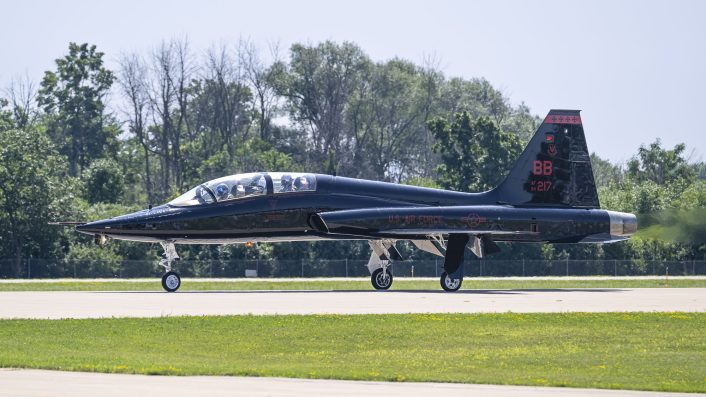
Anyhow, I looked into the program and thought it sounds really unique. I was still a Lieutenant, barely had the hours. I needed 900 hours, so, when I hit my 900 hours, I dropped off my application, went out to Beale AFB, and had the interview. The timing for me was perfect, as they needed to fill the training slots, thus I was hired. Shortly after my U-2 training I was sent to the U-2 base in Alconbury, England. I was in Alconbury for three and a half years. Again, good timing for me, as I was able to go over to the desert. I flew the U-2 on the opening day of Desert Storm.
Can you provide aircraft flown and total hours?
Sure, The T-38, also, one year in the MC-12 and the U-2, both R and S models. Total hours are approximately 6900. Roughly, 4150 hours in the T-38, 2700 hours in the U-2. Some 978 sorties in the U-2. I am hoping to hit 1000, before the jet is retired.
What is your current status with the U-2 Program at Beale AFB?
I retired from the Air Force in 2014. In 2020, the squadron came up with an idea, they wanted to bring back some experienced pilots to be civilian GS 13 civil servant pilots. I was the first of the small group of us that came back to do that, and I’ve been doing that for five years. I also got requalified in the T-38, so I’m back as an instructor in both aircraft, again. There are four civilian pilots in the squadron, the rest being USAF pilots
What are the most physically or mentally demanding aspects of flying the U-2?
Physically, it’s tough, its long duration flying in a very, very small, single pilot cockpit, wearing a pressure suit. Imagine, putting yourself in scuba gear and sitting in a closet. You either like it and deal with it or you don’t.
So how do you prepare for such conditions?
You just do it and get used to it. I can’t really think of a way that I prepared other than getting the standard good sleep. Of course, you’re not going to be eating proper food for the better part of half a day. Therefore, you need to do all the things associated with eating well. At the initial interview, I knew what I was getting into, and I thought, this will be kind of fun. you either like it or you don’t.
What is the longest mission you’ve ever flown in the U-2 and longest combat mission?
12.1 hours, In 2014, I ferried a jet from England, back to Northern California. The longest combat sortie was 11.2 hours; it was the opening day of the second Gulf War.
Were there any missions that you have flown, that were particularly, tense or memorable, especially in contested airspace?
Yes. Opening day of Desert Storm one. I was flying an H camera (film based high resolution optical camara), flying up along the Iraqi border. I was actually flying the last U-2 ever built, 80-1099, and I got lit up by an Iraqi missile site. I never saw the missile, probably never launched, but I got some indication. That was kind of cool, kind of, stressful.
I have had a lot of instances with the aircraft that got my attention. The aircraft is very difficult. Turbulence over Korea, it’s very bad. I’ve had the autopilot kick off at night with no horizon, and the aircraft started to roll over with extreme turbulence in Korea. So, yes, I have had my share of events. However, with the U-2 most of the things you will find happen below 10 feet. It’s the things happening on the runway, the plane getting sideways on the runway, heading for the dirt. I’ve had a few close calls there.
Let’s talk a bit about the T-38 as a companion trainer for the U-2.
It’s a great companion trainer for what we use it for. It was hard for me to adapt from the T-38 to the U-2, as they fly very differently, however, now that we have the T-38 as a companion trainer, it helps tremendously. We are not flying the T-38 to get the monkey skills of flying. We’re doing it to keep our head in the game. It requires a fairly fast cross-check, like the U-2. Flying the T-38 trains you to think the way you need to when flying the U-2. Again, it is a great companion trainer, in my personal opinion.
We have the 70th Anniversary of the U-2’s first flight in August. What does that mean to you personally?
Well, from the military aspect, it shows me that they were really ahead of their time on the aircraft. It’s a 70 year old design and it’s still doing things that nothing else really does. Kelly and his team were really far ahead. We’re all very proud of the work that we do out there. I don’t fly operational missions anymore. I don’t go overseas. I just stay home and teach the new pilots. However, I’m very proud of sending them out and doing the missions that they do. The plane is extremely relevant. It does fantastic work. Not the same kind of work it did 50, 60 years ago, but it keeps up with the times.
How has the U2’s mission and its relevance evolved from the Cold War, to today’s environment of near peer competition?
On a simplistic level, think of it like your old pickup truck, yes, there’s a lot of new stuff out there, but you can throw anything in your pickup truck. You create something in a laboratory, or you’re a contract company, we can plug into the U-2. We can test it, we can power it with the generator that we have on board, and we can have it out on the front lines doing the mission right away. So, we have stayed relevant with all the new technology. People say, “That’s a 40 year old jet you have out there, how can it still be relevant?” Well, because it’s not the airframe, that’s the F-150 truck I’ve got that’s 40 years old. The stuff on the inside is the newest, the best, the greatest sensors.
Lastly, how did flying the U-2 change you as a person or a leader?
Great question, let me tackle this in a roundabout way. I’ve got approximately 120 aircraft in my log, that I’ve flown. Civilian aircraft, a few military aircraft, and I always get asked by people, what is your favorite aircraft?
When you really think it through, and it sounds cliche, but I would say the U-2 is my favorite aircraft, and here’s why. I do love flying the aircraft, however, getting involved in this program as a 26 year old, brand new captain, has completely changed my life. I get to work with the best people. I get to work with the pilots of my squadron, it has taken me to some really cool places in the world. The fact I’m sitting here talking to you, it has truly opened up so many opportunities. The A-37 I flew last year at Oshkosh, I was able to do that because I met the owner 12 years ago, doing a U-2 presentation. Thus, it has opened so many doors, to meet the nicest people in the whole world, and the older I get I realize it is about the people. So, a very cliched answer, but it has genuinely opened many, many doors, it has changed my life.
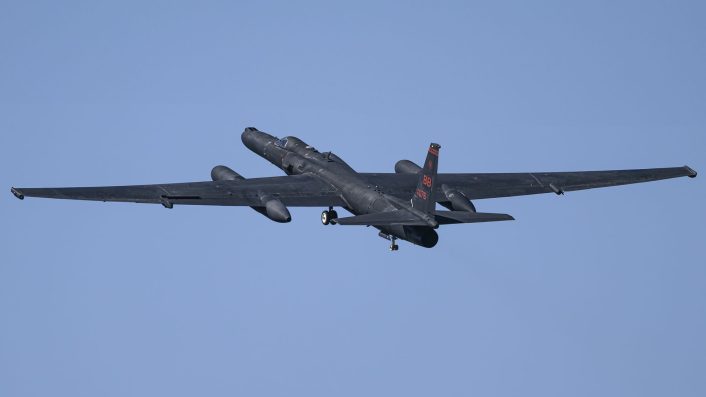
Acknowledgements
The author wishes to thank the following for their support: Dick Knapinski, Director of Communications EAA, Drew Stephani, Communications Specialist EAA, TSgt Samuel Burns, 9th RW Public Affairs, Beale AFB, CA, Lt. Colonel GOGO, Inspector General, U-2 Pilot, 9th RW, 99th RS, Beale AFB, CA. Lt. Colonel Jon “Huggy” Huggins, Instructor Pilot, 9th RW, 1st RS, Beale AFB, CA.

